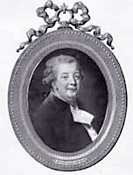Lightyears Collection
Chiris
The fragrance house of Antoine Chiris dates back to 1768 and is considered to be the first and perhaps the greatest of the enterprises that made a business of harvesting natural materials and turning them into the raw materials of perfumery and, at times, creating the perfumes themselves. Antoine de Chiris was born into a wealthy family of Italian origin. In Grasse he began buying up fields which produced flowers which were converted into perfumery materials. Chiris held early patents on a steam distillation process capable of producing significant amounts of high quality oil at an economic cost. This technology helped made Grasse the international focus of perfumery for over a century and a half. As the business prospered, Chiris expanded operations globally through ownership of foreign fields and manufacturing facilities and through the development of foreign agents and subsidiaries. Just as W.J. Bush & Co. expanded from London to a multitude of countries throughout the British Empire, so too did Chiris expand from Grasse to perhaps every French colony — and elsewhere, such as the United States. By 1850, Grasse — with its global relationships — had become the world center of perfumery materials and a leading source of perfume, challenged only, perhaps, by the Russian perfume houses — which were buying their raw materials largely from Grasse. In time, Chiris factories existed in Grasse, Reggio and Messina (in Calabria), Avola (Sicily), Boufarik (Algeria), Sousse (Tunisia), Ouaka (Congo), Antalaha (Madagascar), Muheli (Comoro Islands), Saint-Denis (Bourbon Islands) Cayenne (Guyanne), Chung King and Shanghai (China). This may be a partial picture due to the complex relationship with subsidiaries. Chiris offices could be found in Bordeaux, Marseille, Lyon, Paris, Geneva, Milan, Brussels, Prague, Vienna, Warsaw, Moscow, Hamburg, London, Barcelona, Lisbon, Bucharest, Trieste, Constantinople, Tunis, Oran, Algiers, Casablanca, Cairo, Montreal, New York, Chicago, Rio de Janeiro, Saint Paul (Brazil), Santiago, and Buenos Aires. Deeply involved in politics, Leon Chiris (like his counterpart at Roure Bertrand, Jean Amic), was elected senator of the Maritime Alps. PerfumeIn addition to selling perfumery materials, Chiris, at times — particularly in the decades around 1900— created finished fragrances. One example of a Chiris creation is In Love, done for the English couture house of Norman Hartwell. In those decades around 1900, Leon Chiris operated a perfumery school at Grasse and, while most of the students have remained anonymous, one particular student — who left after only a year — was the exceptionally talented François Coty who, in a short while, would beocme a large, and demanding, customer. A second perfumer of fame who passed through the House of Chiris was Ernest Beaux who had been employed by A. Rallet & Co. of Moscow. When Rallet fled Russia at the onset of the Russian Revolution, they took refuge in Grasse at Chiris's Bocca factory. Beaux was set up in a new laboratory which was where he was working when he was introduced to Gabrielle Chanel, and later Pierre Wertheimer. Ernest Beaux went on to create memorable perfumes for both Chanel and Wertheimer's Bourjois. As to François Coty, he too, through Chris, developed a relationship with A. Rallet & Co. and they became the distributors of his early perfumes for both Europe and Russia. Unfortunately for Coty, when the Russian Revolution came, his total investment in that country was lost, a significant blow for him. The End Of Family ControlThe Chiris business had been passed down from father to son since the beginning. But, starting around 1930, the business began to falter due to the increased costs of production in France and the increased competition from synthetic perfumery materials. Unlike Roure Bertrand, Chisis had not jumped into the synthetics business. The growing downward trend was accelerated by the Second World War, which cut Grasse off from the rest of the world and allowed American factories to gain traction with their production of synthetics, and then by the spread of perfume to the mass markets, a trend which grew quickly from the early 1950's. In 1967, Chiris was sold out of the family to U.O.P. (Universal Oil Products). In 1977 it was purchased by Naarden, a Dutch perfume house. In 1980 it was sold again, this time to Clin-Midy-Aromatiques, a subsidiary of giant Sanofi. |
If you have any information you would like to share with us about Chiris, please use the message sender below.
|


Philip Goutell
Lightyears, Inc.




